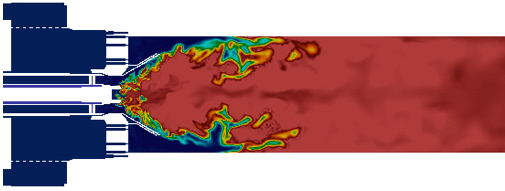
The design of modern combustion systems needs to address challenges related to reduction of pollutant emissions, flexibility of operation while avoiding thermo-acoustic instabilities. The use numerical simulations is important as they provide detailed insights into the performance of the systems.
Summary
Combustion modelling is an important science focused on the study of chemically reactive flows for applications of power and propulsion. The correct prediction of the flow dynamics and heat release in combustion devices has important implications in the fuel consumption, efficiency, stability and pollutant emissions in many engineering and energy systems. In particular, turbulent combustion is of great importance since most of practical flows are turbulent.
Turbulent combustion is a complex phenomenon that involves the interaction of chemical reactions and heat release with the turbulent structures of the flow. This interaction leads to the development of a wide range of time and length scales coupled to hundreds of species and reactions that become highly computationally expensive to model. Therefore, the use of High-Performance Computing (HPC) is employed allowing the numerical simulations to account for the real physics of the flames that otherwise would be difficult to consider in real applications. At the Combustion Group of CASE department, we use the parallel finite elements code ALYA to address applications using industrial-related approaches such as Reynolds-Averaged Navier-Stokes (RANS) simulations as well as more advanced formulations based on Large-Eddy Simulation (LES) or Direct Numerical Simulation (DNS).
Objectives
The current research activities are focused on the following areas:
- Laminar and turbulent flames.
- Non-premixed and premixed combustion.
- Chemical kinetics reduction and tabulation.
- Thermoacoustic instabilities.
- Bio-fuels.
- Full engine simulations.
- Heat transfer in complex reactive systems.


